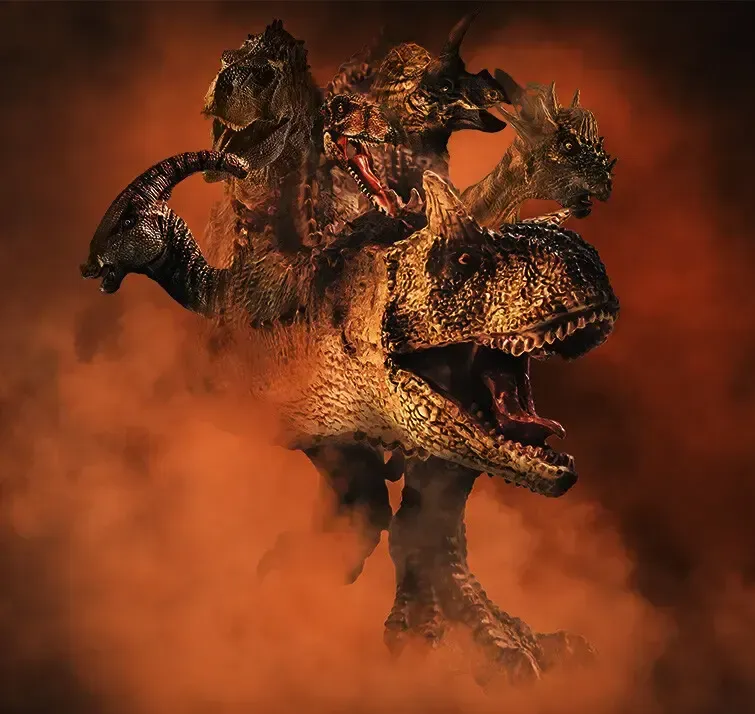Who are the seven heads in the book of revelation?
Who are the seven heads in the book of revelation?
Who are the seven heads in the book of revelation?
In Bible prophecy we often find ourselves reading about Dragons, Beasts, and other mystical creatures. And although the description the Bible gives to these creatures can be frightening, we understand that these creatures are symbolic. One such symbol that this study will focus on is the Seven Heads found in the 12th, 13th, and 17th chapters of Revelation. Here's how John presents them:
And there appeared another wonder in heaven; and behold a great red dragon, having
seven heads and ten horns, and seven crowns upon his heads.
Revelation 12:3
And I stood upon the sand of the sea, and saw a beast rise up out of the sea, having
seven heads and ten horns, and upon his horns ten crowns, and upon his heads the name of blasphemy.
Revelation 13:1
So he carried me away in the spirit into the wilderness: and I saw a woman sit upon a scarlet coloured beast, full of names of blasphemy, having
seven heads and ten horns.
Revelation 17:3
There's a lot of speculation on the identity of these Seven Heads, however, John may have increased that speculation when he made the following declaration of the Seven Heads: "And there are seven kings: five are fallen, and one is, and the other is not yet come; and when he cometh, he must continue a short space. And the beast that was, and is not, even he is the eighth, and is of the seven, and goeth into perdition."
Revelation 17:11-12
In this study, we will find out exactly who these Seven Heads are but first let's look at some of the more popular interpretations regarding this symbol.
SEVEN ROMAN GOVERNMENTS
SEVEN ROMAN GOVERNMENTS
In Bible prophecy we often find ourselves reading about Dragons, Beasts, and other mystical creatures. And although the description the Bible gives to these creatures can be frightening, we understand that these creatures are symbolic. One such symbol that this study will focus on is the Seven Heads found in the 12th, 13th, and 17th chapters of Revelation. Here's how John presents them:
And there appeared another wonder in heaven; and behold a great red dragon, having seven heads and ten horns, and seven crowns upon his heads.
Revelation 12:3
And I stood upon the sand of the sea, and saw a beast rise up out of the sea, having seven heads and ten horns, and upon his horns ten crowns, and upon his heads the name of blasphemy.
Revelation 13:1
So he carried me away in the spirit into the wilderness: and I saw a woman sit upon a scarlet coloured beast, full of names of blasphemy, having seven heads and ten horns.
Revelation 17:3
There's a lot of speculation on the identity of these Seven Heads, however, John may have increased that speculation when he made the following declaration of the Seven Heads: "And there are seven kings: five are fallen, and one is, and the other is not yet come; and when he cometh, he must continue a short space. And the beast that was, and is not, even he is the eighth, and is of the seven, and goeth into perdition."
Revelation 17:11-12
In this study, we will find out exactly who these Seven Heads are but first let's look at some of the more popular interpretations regarding this symbol.
SEVEN ROMAN GOVERNMENTS
SEVEN ROMAN Emperors
SEVEN Catholic Popes
SEVEN EMPIRES BEGINNING WITH BABYLON
SEVEN EMPIRES BEGINNING WITH Egypt
SEVEN ROMAN EMPERORS
SEVEN ROMAN EMPERORS
SEVEN CATHOLIC POPES
SEVEN CATHOLIC POPES
SEVEN Empires beginning with babylon
SEVEN EMPIRES BEGINNING WITH BABYLON
SEVEN EMPIRES BEGINNING WITH Egypt
SEVEN EMPIRES BEGINNING WITH EGYPT
Your Questions Answered
The above list of seven heads, leads us to ask a few questions. Hopefully, the below answers will help you see this important truth.














